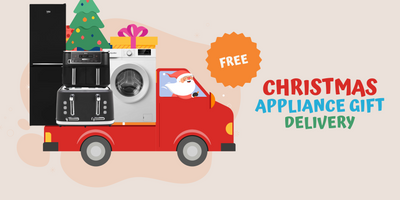The Problem With Traditional Clothes Drying Methods

What is a Tumble Dryer?

Tumble dryers come in different types, including vented, condenser, and heat pump models. Vented tumble dryers expel hot air through a vent, which needs to be connected to an external wall or window. Condenser tumble dryers collect the moisture from the clothes in a container, which can be emptied manually. Heat pump tumble dryers use a heat exchanger to recycle the hot air, making them the most energy-efficient option.
Three Types of Tumble Dryers

Vented Tumble Dryers

Vented tumble dryers require proper ventilation to ensure efficient drying. If the vent is not properly installed or becomes blocked, it can affect the performance of the dryer and prolong the drying time.
Condenser Tumble Dryers

Condenser tumble dryers offer more flexibility in terms of placement, as they can be installed in any room with a power source. However, the water container needs to be emptied regularly to ensure optimal performance.
Heat Pump Tumble Dryers

While heat pump tumble dryers may have a higher upfront cost compared to other types, the long-term savings on energy make them a worthwhile investment. They are also gentler on clothes, as the lower drying temperatures help preserve the quality of the fabric.
Benefits of Owning a Tumble Dryer



1. Time-saving: One of the biggest advantages of owning a tumble dryer is the time it saves. With air drying, you have to wait for hours, if not days, for your clothes to dry. A tumble dryer can dry a full load of laundry in just a fraction of that time.
2. Convenience: Tumble dryers bring convenience to your laundry routine. You no longer have to worry about checking the weather forecast or waiting for a sunny day to dry your clothes. With a tumble dryer, you can dry your clothes anytime, regardless of the weather outside.
3. Eliminates Wrinkles and Odors: The tumbling action of a tumble dryer helps prevent clothes from wrinkling. The constant movement ensures that the garments are evenly dried, leaving them smooth and wrinkle-free. Additionally, the hot air helps eliminate odors, leaving your clothes smelling fresh and clean.
4. Customizable settings: Tumble dryers come with various temperature settings, allowing you to customize the drying process to suit different fabric types. Delicate fabrics can be dried at a lower temperature, while heavier fabrics can withstand higher temperatures for faster drying.
5. Soft and fluffy results: Unlike air drying, which can leave clothes feeling stiff, tumble drying leaves garments soft and fluffy. The gentle tumbling action helps maintain the integrity of the fabric, resulting in softer, more comfortable clothes.
Proper Usage and Maintenance of a Tumble Dryer

To ensure optimal performance and longevity of your tumble dryer, it's important to follow these proper usage and maintenance tips:
1. Clean the lint filter: Clean the lint filter after every use to prevent lint buildup. A clogged lint filter can reduce the airflow and affect the drying performance.
2. Empty the water container: If you have a condenser tumble dryer, remember to empty the water container regularly to prevent it from overflowing.
3. Check for blockages: Regularly check the vent (for vented dryers) and the condenser unit (for condenser dryers) for any blockages. Clear any obstructions to ensure efficient drying.
4. Avoid overloading: Overloading the tumble dryer can reduce its drying efficiency and cause excessive wear and tear on the drum and motor. Follow the manufacturer's guidelines for load capacity.
5. Regular maintenance: Schedule regular maintenance checks to ensure all components of the tumble dryer are in good working condition. This can help identify any potential issues before they become major problems.
Factors to Consider When Buying a Tumble Dryer

When buying a tumble dryer, there are several factors to consider to ensure you choose the right one for your needs:
1. Capacity: The capacity of the tumble dryer determines how much laundry it can hold. Consider the size of your household and the amount of laundry you typically do to determine the appropriate capacity.
2. Energy efficiency: Look for tumble dryers with high energy efficiency ratings. This will not only save you money on electricity bills but also reduce your environmental impact.
3. Noise level: Tumble dryers can be noisy, especially when operating at full capacity. If noise is a concern, look for models with a low decibel rating.
4. Programs and Features: Consider the different programs and features offered by the tumble dryer. Look for options like sensor drying, which automatically adjusts the drying time based on the moisture level in the clothes.
5. Price: Set a budget for your tumble dryer purchase and compare prices across different brands and models. Consider the long-term savings on energy when assessing the overall value.
Energy Efficiency and Cost Savings With a Tumble Dryer

While tumble dryers are known for their convenience, they can also be energy-efficient and help you save on electricity bills. Here are some ways to maximize energy efficiency and cost savings with your tumble dryer:
- Choose an energy-efficient model: Look for tumble dryers with high energy efficiency ratings. Energy-efficient models use less electricity to dry clothes, resulting in lower energy consumption and cost savings.
- Optimize the drying process: Use the appropriate drying program and temperature setting for each load. Overdrying clothes not only wastes energy but also increases wear and tear on the fabric.
- Dry full loads: Whenever possible, dry full loads of laundry. This maximizes the efficiency of the tumble dryer and reduces the number of cycles needed to dry all your clothes.
- Use sensor drying: If your tumble dryer has a sensor drying feature, make sure to use it. Sensor drying automatically detects the moisture level in the clothes and adjusts the drying time accordingly, preventing over-drying.
- Proper maintenance: Regularly clean the lint filter and check for blockages to ensure optimal airflow. A well-maintained tumble dryer performs more efficiently and uses less energy.

While tumble dryers are generally safe to use, it's important to follow these safety precautions to reduce the risk of accidents:
1. Read the manufacturer's instructions: Familiarize yourself with the specific guidelines and safety instructions provided by the manufacturer. This includes information on installation, usage, and maintenance.
2. Keep the area clear: Ensure that the area around the tumble dryer is clear of any flammable materials or objects that can obstruct airflow.
3. Ventilation: If you have a vented tumble dryer, ensure that the vent is properly installed and free from any blockages. This will prevent the buildup of hot air and reduce the risk of overheating.
4. Unplug when not in use: When not in use, unplug the tumble dryer to prevent any accidental activation or electrical issues.
5. Regular maintenance checks: Schedule regular maintenance checks to inspect the electrical components and ensure they are in good working condition.
Comparing Popular Tumble Dryer Brands and Models

- Brand A: Known for its reliability and energy efficiency, Brand A offers a range of tumble dryers suitable for different budgets and needs. Their models come with various features, including sensor drying and customizable programs.
- Brand B: With a focus on innovative technology, Brand B's tumble dryers offer advanced features like steam drying and smartphone connectivity. While their models may have a higher price point, they are known for their exceptional performance and durability.
- Brand C: Brand C specializes in heat pump tumble dryers, making them a top choice for those looking for energy-efficient options. Their models are designed to deliver excellent drying results while consuming less energy.
When comparing tumble dryer brands and models, consider factors such as price, energy efficiency, capacity, and features. Read customer reviews and ratings to get a better understanding of the performance and reliability of each brand.
Why a tumble dryer is a must-have appliance for every household?
A tumble dryer is a must-have appliance for every household due to the drawbacks of traditional air drying methods. Air drying is time-consuming, can leave clothes feeling stiff, and exposes them to allergens. In contrast, a tumble dryer quickly and efficiently dries clothes, offering convenience, wrinkle and odor elimination, customizable settings, and softer results. Proper maintenance is crucial, and factors like capacity, energy efficiency, and safety precautions should be considered when purchasing one. By choosing an energy-efficient model and optimizing the drying process, you can save on electricity bills. When comparing brands, consider factors like price, energy efficiency, and customer reviews. In summary, a tumble dryer is a valuable addition to your home, offering time-saving and convenient solutions for your laundry needs while being energy-efficient when used wisely.
Did you find this interesting? Read more here.







